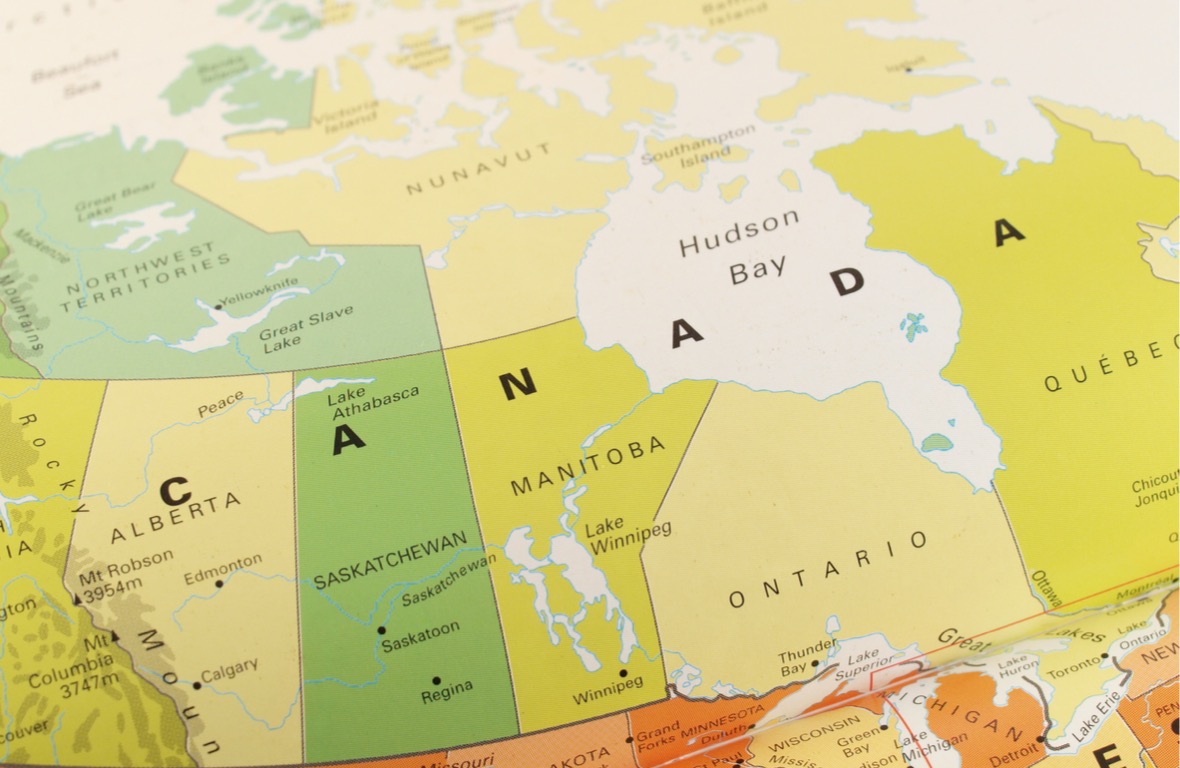E-waste Disposal, Management, and Recycling Laws
E-waste Laws: Introduction
Many electronic devices contain toxic materials that, if not correctly handled, end up leaching into the soil and groundwater, contaminating the environment and wildlife. These contaminates ultimately end up in the food chain and are ingested by humans. The result is, globally, nations are grappling to fight healthcare issues caused by toxic compounds from poorly managed electronic waste. Additionally, these toxic materials end up in the air causing respiratory problems.
E-Waste is a Growing Global Problem
Global electronic waste stood at 53.6 million metric tons in 2019, and this amount keeps rising. Additionally, records indicate that only 17% of e-waste was recycled in the same year. Several factors such as increased spending power and the availability of electronics, have fueled e-waste generation in recent decades, making it the fastest growing waste stream worldwide. This trend is expected to continue, with projections showing that by 2030, annual e-waste generation worldwide will have increased by approximately 30 percent.
Projected electronic waste generation worldwide to 2030 (in million metric tons)*


This is why countries must implement stringent electronic disposal laws and electronic recycling laws that govern how individuals, corporations and institutions manage electronic waste.
Canada has been at the forefront in implementing provincial and federal laws to curb the growing electronic waste crisis. This article highlights the e-waste handling rules and regulations that you need to implement in your recycling processes.
Additionally, it’s advisable only to engage recycling companies that meet the government requirements and have the appropriate certifications to show proof of quality. This check helps you avoid costly legal penalties.
TechReset ensures each recycling process undergoes rigorous auditing to ensure our operations meet regulatory standards. See a list of our certifications here.



Make an Informed Decision
Federal E-Waste Laws Canada
Two different levels within the Canadian government control electronic disposition and recycling processes. These levels include:
- Federal Government
- The provincial and territorial government
The federal government regulates electronic recycling laws and electronic disposal laws internationally and between provincial regions in Canada. Additionally, the federal government is responsible for translating international e-waste handling rules into Canada’s national legislation.
This means that the federal government does not develop legislation for electronic waste management; the institution translates and enforces provincial and international e-waste laws. The laws that the federal government have jurisdiction on include:
Toxic Substance Control Legislation
The Canadian government has the authority to enforce legislation controlling products that contain toxic substances listed in the regulation’s toxic substances list. They must reduce harmful substances used in manufacturing products and minimize their release from the same products.
The toxic substance control list includes common materials used in electronics such as cadmium, mercury, and polybrominated diphenyl ethers (PBDEs).
Electronics Product Stewardship Standards
The Electronics Product Stewardship Standards law was set at the provincial level, but the federal government still enforces its electronic recycling and electronic disposal laws.
Their main objective is to promote shared responsibility throughout the product life cycle – to reduce the impact of their activities on the environment, otherwise known as product stewardship. Additionally, the standards harmonize electronic waste management approaches between Canadian provinces.
The Canadian Council of Minister of the Environment (CCME) is the primary federal body that oversees the Electronics Product Stewardship Standards. These standards operate with two lists that consist of products recommended for electronic waste management. They include:
- Primary products for e-waste recycling and management: IT equipment, audio-visual devices, and communications hardware that contain toxic materials. These materials also have a high production and consumption rate and require prioritization in e-waste management due to their impact on the environment.
- Other electrical items for e-waste recycling and management: these are items recommended for e-waste management consideration. They include small and large household appliances, electrical tools, and monitoring devices.
There are twelve principles/standards under the Electronics product Stewardship Standards legislation:
- Producers are responsible for electronic waste management where producers include the manufacturers, first product importer, or brand owner who sells the product in each territory.
- Taxpayers do not bear the cost of electronic waste management.
- Producers should minimize the health and environmental impact of their activities throughout the product’s lifecycle.
- Companies should do electronic waste management in accordance with the 4R waste management principle, i.e., Reduce, Reuse, Recycle, and Recovery.
- Consumers have the right to access e-waste collection systems at no cost
- Educate and create awareness to stakeholders within the product life cycle to understand their role in e-waste management. Stakeholders include consumers, manufacturers, retailers, and resellers.
- Electronic waste management program implementation should strive for consistency and equity for rural, small, and remote communities.
- Neighbouring territories should strive for consistency in e-waste product collection.
- Electronic waste management programs will comprise commercial, historic, orphan, and residential products. Orphan products are undeveloped technologies or products not yet marketed due to low commercial viability.
- Electronic waste management programs and organizations are required to report on performance and ensure transparency in financial management.
- Stakeholders should manage electronic waste management programs economically and logistically – a sensible way while enhancing local social and economic benefits.
Electronic waste from Canada is only for recycling purposes in places or facilities that commit to fair labour and environmentally safe practices. The facilities should also document their practices for audit and accountability purposes.
E-waste Laws in Provinces and Territories



The government level in charge of creating and mandating electronic recycling laws and electronic disposal laws is the Provincial and territorial government. At this level, officials developed e-waste handling rules that require Extended Producer Responsibility (ERP) for specific electronic and electrical devices.
Various provinces now implement this legislation to manage electronic waste through the Extended Producer Responsibility (ERP) regulations. The specific laws according to each province include:
Ontario
Ontario’s Electrical and Electronic Equipment (EEE) regulation falls under the Resource Recovery and Circular Economy Act and was last updated in 2020. The EEE regulation enacts the province’s electronic waste management programs through the following standards:
- Producers of IT and audio-visual equipment should establish electronic waste collection systems for consumers free of charge.
- Encourage appropriate waste management practices through the 4R principle of Reduce, Recycle, Reuse and Recover.
- Manufacturers to implement educational programs to create awareness around electronic waste management principles.
- The Ontario government requires all electronic waste collected by producers to be sent to registered recycling organizations within three months of collection for battery materials.
Alberta
The Alberta Recycling Management Authority (Also referred to as Alberta Recycling) oversees and enacts the Electronics Designation Regulation (EDR) under the Environmental Protection and Enhancement Act (EPHA). The Electronic Designation Regulation (EDR) came into force in 2004.
Alberta Recycling administers and enforces industry-managed recycling programs for electronics and all other materials specified in the Environmental Protection Act. According to the Alberta electronic recycling laws and electronic disposal laws, no individual and organization have permission to supply materials designated in the EPA act in Alberta without prior registration.
These suppliers distribute new electronic equipment in Alberta, including manufacturers, wholesalers, distributors, and retailers.
British Columbia
The British Columbia Ministry of Environment administers the British Columbia Recycling Regulation, which sits under the Environmental Management Act (EMA) and was last reviewed in 2020. Under the British Columbia Recycling Regulation, all supply stakeholders are responsible for product life cycle management, financing electronic waste collection, and product recycling for discarded equipment. These stakeholders include manufacturers, retailers, importers, and distributors.
The British Columbia Recycling Regulation also requires product stewardship entities to indicate a not-for-profit designation and report performance status. Nevertheless, the product stewardship organizations are not required to follow specific operational or financing rules, granted they don’t acquire funding from taxpayers or the government.
Quebec
The Québec residual materials management policy enforces electronic recycling laws and electronic disposal laws in the province and was first established in 2008. The principles underlined in the policy include:
- Residual Materials management should assign high priority to electronic waste reuse, reduction, and recycling.
- Reduce or prevent residual materials production by targeting manufactures and marketers of residual materials
- Promote and create awareness of residual materials recycling.
- Ensure safe management and reduce the disposal of residual materials.
Additionally, Quebec has a Product Stewardship Program for end-of-life Electrical and Electronic Equipment established in 2011. The program’s mandate is to divert electronic waste from landfills and pollute other regions through illegal exports. In addition, the program ensures stakeholders collect and recycle end-of-life equipment as per regulations and environmental standards.
Manitoba
The Green Action Centre is a not-for-profit incorporated within the Manitoba legislation. This legislation provides a framework for governing product stewardship programs in Manitoba through the province’s Waste Reduction and Prevention Act (WRAP) that was established in 2015. Specific duties within the WRAP include:
- Creating and enforcing waste management programs among consumers, retailers, manufacturers, distributors, government agencies, and other stakeholders.
- Educate and create awareness for waste management programs.
- Pay for expenditure related to waste management activities.
- To ensure proper resource usage so that current needs do not compromise the environment and its ability to meet the needs of future generations.
- Promote appropriate waste management practices through the 4R principle of Reduce, Recycle, Reuse and Recovery.
- Encourage waste reduction scientific research and technology to prevent and reduce the negative impact on the environment.
Nunavut and Northwest Territories
The Northwest Territories Act governs Nunavut’s electronic waste management under the Waste Reduction And Recover Act. The act Stipulates the e-waste handling rules and requirements below for electronic waste management:
- The Government of the Northwest Territories (GNWT) requires the public to pay electronics surcharges. This surcharge is an environmental handling cost for any new electronic device purchased.
- Distributors must register with the Government of the Northwest Territories (GNWT) to sell, manufacture or distribute any electronic equipment.
- Distributors must pay the environmental surcharge for any new electronic produced and sold.



See how we can solve your hard drive destruction needs
What Certifications does TechReset have?
TechReset understands the regulatory frameworks in each Province and Territory and follows stringent industry standards. Our facilities follow e-waste industry protocols, and we are leaders in best practices.
Here are our industry certifications:
- ISO 14001:2015 Certified (Environmental Management Systems)
- ISO 9001:2015 Certified (Quality Management Systems)
- R2: 2013 Certification: This certification demands IT Asset Disposal companies adhere to a rigorous set of requirements that regulate environmental, worker health and safety and security practices
- Certified Silver Partner with Blancco, the global leader in data erasure
- We follow the Basel Global Convention protocols
- ISO 45001 Certified
Contact us to discuss your questions regarding the safe disposal of your IT assets.


